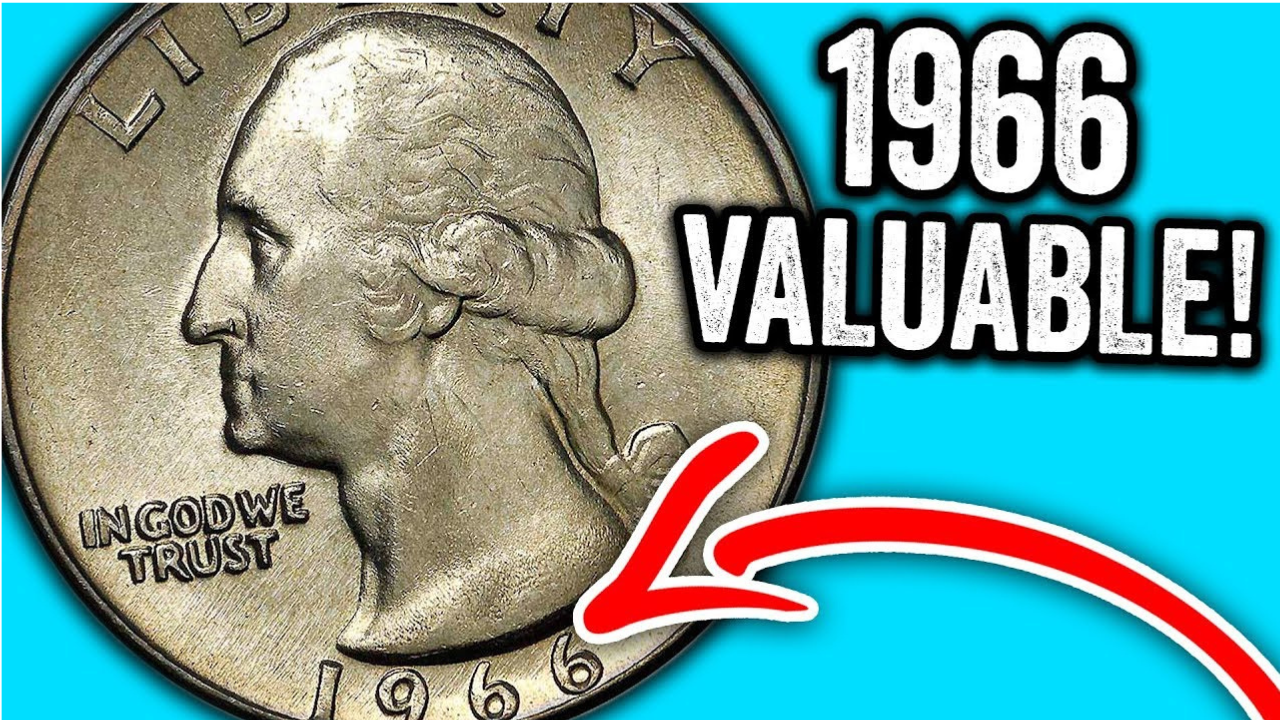1966 Washington Quarter Could Be Worth $20 Million:Could a coin in your pocket be worth millions of dollars? For collectors and treasure hunters alike, finding a rare gem among everyday money is a tempting dream. That dream could come true with the 1966 Washington quarter—a coin that could be worth up to $20 million under the right conditions.
Why the 1966 Washington Quarter Is Special
At first glance, the 1966 Washington quarter looks like any other ordinary coin. With the figure of George Washington on the obverse and the iconic eagle design on the reverse, it doesn’t look much different from other quarters minted in the mid-20th century. However, numismatists – experts in rare and valuable coins – know that some 1966 quarters have unique characteristics that dramatically increase their value.
The U.S. Mint stopped using 90% silver in quarters after 1964. From 1965 on, quarters were made with a copper-nickel coating, making 1966 the earliest part of the post-silver era. Still, some extremely rare transitional error coins may have been minted on leftover silver planchets from 1964, or have some minting anomalies that set them apart. These are the rare coins that collectors covet — and are willing to pay big bucks for.
A
The $20 Million Mystery
At the center of this frenzy is an alleged 1966 Washington coin, which is believed to have been minted using a silver planchet by mistake or an unusual die type. Reports suggest that a pristine, flawed version of this coin could fetch up to $20 million at auction due to its extreme rarity and demand from collectors.
So far, no officially confirmed sale of any 1966 coin has reached that lofty figure – but whispers in the numismatic world indicate that such a coin may exist, possibly in private hands or in an unknown coin jar waiting to be discovered.
What to Look for
If you want to try your luck and examine the money you find in your pocket, here are a few things to consider:
- Weight: A standard 1966 clad quarter weighs 5.67 grams. If your quarter weighs closer to 6.25 grams (the weight of a 1964 silver quarter), it may have been minted on a silver planchet.
- Color and Sound: Silver quarters make a slight “ring” when dropped on a hard surface and lack the copper-colored edge seen in clad coins.
- Die errors: Look for double dies, off-center strikes, or other unusual features.
- Condition: Uncirculated or new coins are quite valuable, especially if they are flawed coins.
Authentication is Important
If you think you’ve found a rare or unusual coin from 1966, don’t try to clean it or alter it in any way. Instead, have it authenticated by a professional grading service like PCGS (Professional Coin Grading Service) or NGC (Numismatic Guaranty Corporation). These organizations can determine the coin’s authenticity, condition and potential value.
Summary
Although the chances of finding a $20 million coin in your change are low, it’s not impossible. Over a billion coins were minted in 1966, some rare coins may still exist – in drawers, jars or even vending machines.
So the next time you get change back, take a close look. You might have a priceless piece of American history in your hands.
Frequently Asked Questions: Is a 1966 Washington Quarter Worth $20 Million
Q1: Why is a 1966 Washington Quarter potentially worth $20 million?
Ans: Although most 1966 quarters are normal and worth face value, some rare flawed coins may have been minted on a leftover planchet of 90% silver or have unique minting anomalies. If such a coin is in perfect condition and certified, it could be worth millions due to its extreme rarity and interest from collectors.
Q 2: How can I find out if my 1966 quarter is made of silver?
Answer: Weigh the coin on a precision scale. A normal cased quarter weighs 5.67 grams. A silver quarter will weigh approximately 6.25 grams. You can also check the edge of the coin – silver quarters have a solid silver color, while cased quarters have visible copper stripes.
Q 3: What are mint errors, and why are they important?
Ans: Mint errors occur during the coin production process and include things like double strikes, off-center designs, incorrect planchets, or die clashes. Rare and dramatic errors can significantly increase a coin’s value, especially in a coin from a high-mintage year like 1966.
Q 4: How many 1966 coins are potentially valuable?
Answer: Of the more than 800 million 1966 coins minted, only a handful are believed to have flaws that make them extremely valuable. These coins are extremely rare, and most have never been found or verified.
Q 5: If I think I have a rare 1966 coin, what should I do?
Answer: Do not clean or alter the coin. Place it in a protective holder and take it to a professional coin dealer or submit it to a third-party grading service like PCGS or NGC for authentication and appraisal.

